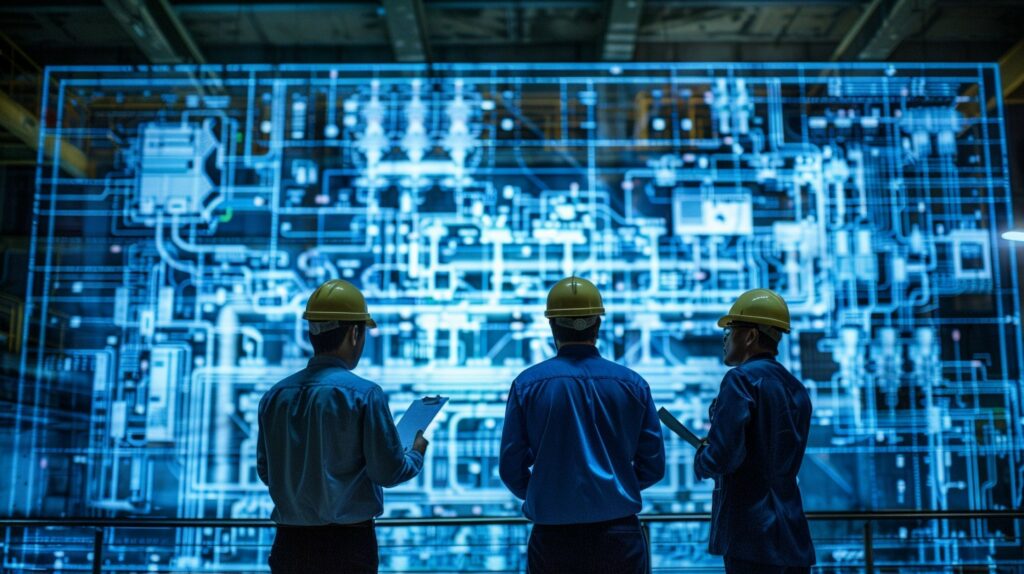Today’s business world is very competitive, and you know what can help you excel in this competitive environment? – The power to predict!
No! I am not talking about super-power to see future, but something close to that.
It is none other than AIML-powered Predictive Maintenance. This tool offers the companies an ability to predict equipment failures before they happen.
It has changed the way industries monitor, maintain, and optimize machinery and operations. This proactive approach to maintenance not only extends the life of equipment but also minimizes downtime and reduces costs.
This article will help you understand how AIML in Predictive Maintenance is helping companies to enhance their predictive capabilities.
What is Predictive Maintenance?
Predictive maintenance is the practice of using data analytics and machine learning models to forecast when equipment or machinery will fail, allowing timely intervention. It is better than the traditional methods, like reactive maintenance, which is fixing something after it breaks, or preventive maintenance, which is checking the machinery at regular intervals and improving maintenance.
You must be thinking, how? – It is because, predictive maintenance offers real-time data to optimize the timing of maintenance, ensuring that interventions occur only when necessary.
The increased demand for AIML-powered predictive maintenance is a sign that the demand for people with AIML will increase too. So, it you want to be the one to grab this career advancement opportunity, then you must enrol in an AIML course.
The Role of AIML in Predictive Maintenance
Artificial Intelligence and Machine Learning play a crucial role in enhancing the effectiveness of predictive maintenance systems. Machine learning algorithms can identify patterns and anomalies in vast datasets that would be impossible for humans to detect. These insights enable companies to make informed decisions about when and how to perform maintenance, reducing both downtime and operational costs.
Here’s how AIML helps in predictive maintenance:
1. Data Collection and Analysis
AIML models can handle vast amounts of data from various sources, including sensors, historical records, and environmental conditions. This real-time data analysis helps identify patterns and trends that might not be immediately obvious to human operators.
2. Detection of Anomalies
Machine learning algorithms can be trained to detect anomalies in the equipment’s operation by comparing current performance with historical performance. These algorithms can flag unusual behavior long before the machine reaches a critical failure point.
3. Failure Prediction Models
AIML systems can create predictive models based on historical failure data. These models can accurately forecast when specific components or machinery will require maintenance.
4. Optimisation and Maintenance Scheduling
With predictive insights, maintenance teams can optimize their schedules, ensuring that repairs are made at the most convenient times without disrupting production. This also reduces the need for unnecessary maintenance, which can add to operational costs.
5. Cost Efficiency
One of the greatest benefits of AIML in predictive maintenance is the cost savings. Companies can minimize downtime, reduce maintenance labor costs, and avoid expensive repairs due to unforeseen breakdowns.
Industries Benefitting from Predictive Maintenance
Manufacturing
Manufacturing facilities are often equipped with complex machinery that must operate efficiently to maintain production schedules. Predictive maintenance enables manufacturers to monitor the condition of equipment in real time, preventing unscheduled downtime and optimizing the maintenance schedule.
Energy and Utilities
In the energy sector, downtime can result in significant revenue losses. Predictive maintenance helps energy companies maintain critical equipment like turbines, transformers, and generators. AIML systems analyze sensor data to predict wear and tear, allowing timely interventions that ensure the reliability of energy supply.
Oil and Gas
Equipment failure in the oil and gas industry can lead to hazardous conditions and costly downtime. Predictive maintenance powered by AIML can detect early signs of equipment degradation, such as pipeline corrosion or pump failure, and provide actionable insights for timely maintenance.
Aviation
In aviation, the failure of critical components like engines or landing gear can be catastrophic. AIML-powered predictive maintenance systems analyze flight data and sensor information to predict failures, improving aircraft safety and reducing maintenance-related delays.
Conclusion
Predictive maintenance, powered by AIML, is reshaping industries by providing a proactive approach to equipment management. By predicting failures before they occur, companies can avoid costly downtime, extend the life of machinery, and reduce operational costs. As industries increasingly adopt AIML-driven predictive maintenance, the demand for professionals skilled in AI and machine learning will continue to grow. Enrolling in an AIML course, like AI course in Hyderabad, can equip professionals with the tools they need to thrive in this rapidly evolving field.



4 thoughts on “The Role of AIML in Predictive Maintenance Across Industries”